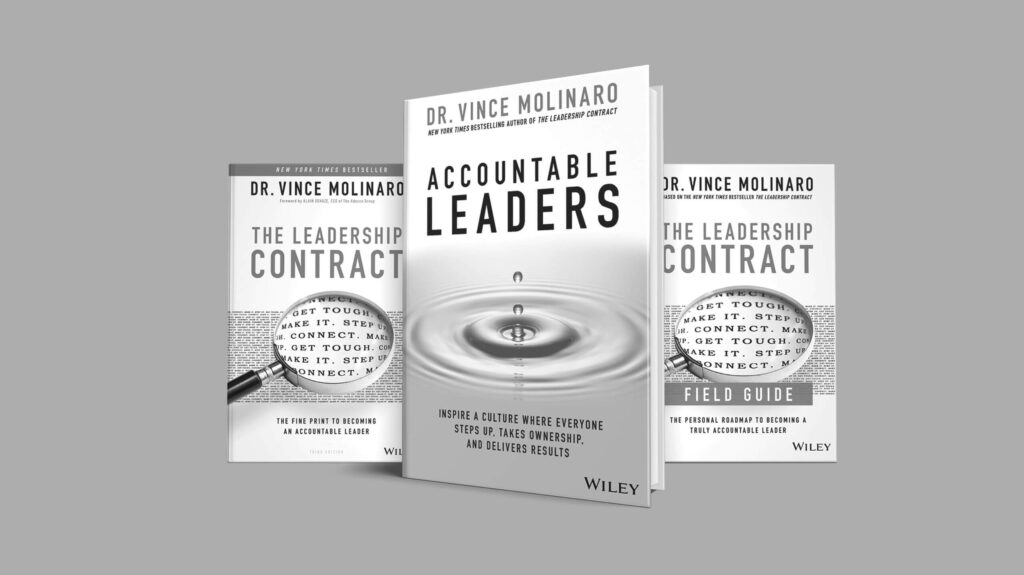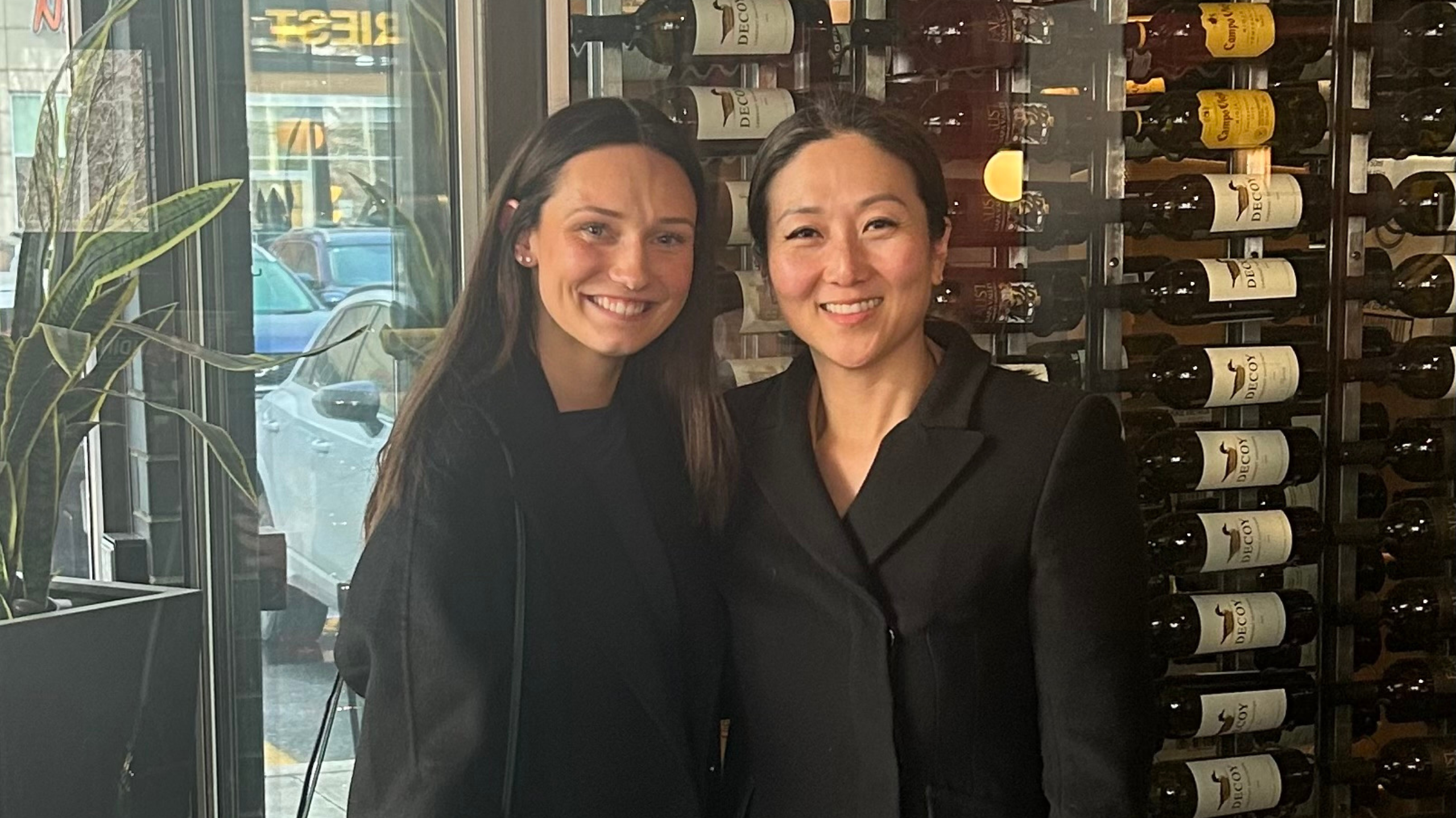On July 23, 2013, I launched the first edition of The Leadership Contract. That was seven years ago today. I was in New York City speaking at the Human Capital Institute conference.
I held a book signing after my presentation and there was a buzz around the table as people lined up. The feedback I received was extremely positive and many mentioned how highly the ideas resonated with them. It was gratifying to receive that feedback.
Little did I know at the time, but that day would be the start of an extraordinary journey that would take me to twenty-five countries and eighty cities. My teams and I would conduct global research on leadership accountability and hundreds of organizations around the world would implement these ideas through our consulting and training programs.
The book became a New York Times and USA Today bestseller. It was then translated into five languages and released in two other editions. Then in 2018, I launched the accompanying Field Guide book.
Over those seven years, I witnessed so many critical leadership stories play out in real-time around the world. Stories that confirmed to me that leaders everywhere were not stepping up when they were needed most and were letting their people down.
I saw too many high-profile leaders embroiled in corruption, inappropriate behavior and scandals. We saw the rise of the #METOO movement, Black Lives Matter, and a dramatic shift in populist governments. Each time, I asked myself: why don’t we have better leadership?
My work with clients confirmed that leaders are under higher expectations, pressure and scrutiny. Many are struggling to keep up. My research also confirms that many leaders are complacent and downright mediocre in their roles.
If all of this wasn’t already bad enough, coronavirus came and upended our world. Leaders everywhere faced an unprecedented crisis that will continue for some time.
Then it got even worse. We all witnessed the shocking and tragic death of George Floyd. Once again, leaders had to confront the reality that we had made little to no progress in addressing systemic racism. As a result, the cries for accountability of leaders were loud and clear as people protested in the streets.
In all my travels, I learned that people are tired of being led by mediocre leaders, working on terrible teams, or being part of organizations with uninspiring cultures. When our leaders let us down or fail to step up when it matters most, we get angry, we lose hope and we feel a sense of deep despair. We all desperately want to be led by great leaders, but, unfortunately, they are few and far between.
There is something else I have learned in over two decades of work as a leadership adviser: the difference between great leaders and mediocre ones is accountability.
But how do you build and scale strong leadership accountability across an organization? This question became the focal point in my newest book, Accountable Leaders.
The core idea of this book is that strong leadership accountability requires a dual approach. First, leaders must demonstrate personal ownership for their roles, step up and be accountable at a personal level. Second, leaders must work to build accountability across the organization, within their teams, and at a culture level.
Accountable Leaders builds from both The Leadership Contract and The Leadership Contract Field Guide. I think of the three books as my own non-fiction trilogy. Here is how the book is organized.
Introduction
- Introduction:
This chapter sets the context for the entire book and summarizes the journey I have been on as a leadership adviser to help leaders be more accountable at a personal and collective level.
PART 1: The World in Which You Lead
- Chapter 1: The New Game Begins Before the Old One Ends
This chapter helps readers to understand the future context for all leaders. It examines the impact of several critical drivers, including the role of transformative technologies, geopolitical instability, revolutionizing work, the need to deliver on diversity, and repurposing the role of corporations in society.
- Chapter 2: Why Do We Not Have Better Leadership?
This chapter examines why leadership is not as strong as it needs to be. Specifically, it explores how many leaders today are overwhelmed, disengaged, underprepared, and struggling to execute strategy. The chapter also discusses how leadership development programs must do more to help address these challenges.
PART 2: Understanding Leadership Accountability
- Chapter 3: How to Think about Leadership Accountability
This chapter discusses leadership accountability from a broader and systemic perspective. It explores the role of the board, the chief executive officer, other senior executives, and the head of human resources to drive accountability in an organization.
- Chapter 4: Leadership Accountability at the Individual Level
This chapter explains how leadership accountability exists at the individual level. It first examines what mediocre leadership looks like, and then discusses what truly accountable leaders do to set themselves apart from other leaders.
- Chapter 5: Leadership Accountability at the Team Level
This chapter outlines how leadership accountability exists at the team level. It explores how teams have transformed, and then it provides an overview of the two dimensions of truly accountable teams.
- Chapter 6: Leadership Accountability at the Culture Level
This chapter details how leadership accountability exists at a cultural level. It discusses why culture is important, and then examines the ten characteristics of a strong community of leaders.
PART 3: The Organizational Response for All Leaders
- Chapter 7: How to Hold Others Accountable for Being Leaders
This chapter presents the four strategies that leaders can use to hold their direct reports accountable for being leaders. Specifically, it examines how to make leadership accountability a priority, how to define leadership expectations, how to build the resilience and resolve of those you lead, and how to help others succeed across the broader organization.
- Chapter 8: How to Build an Accountable Team
This chapter outlines four strategies that leaders can use to build a truly accountable team. Specifically, this chapter shows how to make leadership accountability a priority with your team, how to define team obligations, how to increase the resilience and resolve of your team, and how to be one team.
- Chapter 9: How to Be a Community Builder
This chapter presents the four strategies that all leaders can implement to help create a strong leadership culture across their organizations. Specifically, the chapter presents strategies on how to commit to being a community builder, how to think and act in a one-company way, how to create the foundation to tackle the hard work of leadership and being deliberate in how you build relationships with peers and colleagues.
PART 4: The Organizational Response for Senior Executives and Directors
- Chapter 10: Make Leadership Accountability a Priority in Your Company
This chapter discusses the role that boards, the CEO, senior executives, and the CHRO must play in making leadership accountability a priority in their organizations. It also discusses the need to conduct a leadership accountability audit.
- Chapter 11: Define and Embed Clear Leadership Expectations
This chapter explains the five steps that organizations can implement to define and then embed clear leadership expectations for all leaders.
- Chapter 12: Do the Hard Work to Sustain Momentum
This chapter outlines the strategies that organizations must implement to sustain momentum to drive strong leadership accountability. It discusses how to demonstrate zero tolerance for bad and abusive leadership behavior. It also explains the price of ignoring unaccountable and mediocre leaders. The chapter shows how to be mindful of who you put into a leadership role, and how to support leaders during critical leadership turning points.
- Chapter 13: Foster a Community of Leaders across Your Organization
This chapter explains the strategies that help create a community of leaders across the entire organization. First, it shows how your organization needs to assess the leadership culture, then how to look for leaks in the culture, followed by encouraging relationship building among the leaders through leader forums, and finally knowing how to evolve the leadership culture as the company experiences change and transformation.
Final Thoughts
We are living through a period of significant change in our organizations, our economies, and our world. Companies everywhere are experiencing a higher degree of disruptive change. COVID-19 has intensified the changes already underway.
In a period of radical change and disruption, we desperately need our leaders, at all levels, to be better than ever before. However, at the very time we need all leaders to be stronger, the reality is, they are not.
No matter how bad a situation may be, there is always hope. An ineffective leader can improve, a terrible team can become a great one, and an uninspiring culture can become amazing. It is all possible, but it is not easy. Change never happens by accident or merely hoping for it to happen. It takes a deep desire, real determination —and one other important element—leadership accountability.
We have many resources to help you become the most accountable leader you be, develop accountable leaders on your team, and scale leadership accountability across your organization.
Signup for our monthly newsletter with the latest Gut Check for Leaders, Lead the Future Podcast, and other important leadership accountability news.
Also, you can RSVP for our upcoming webinar, join our online community of accountable leaders, or buy Dr. Molinaro’s, latest book, Accountable Leaders, on Amazon.
©2020 Dr. Vince Molinaro (Leadership Contract Inc.)





